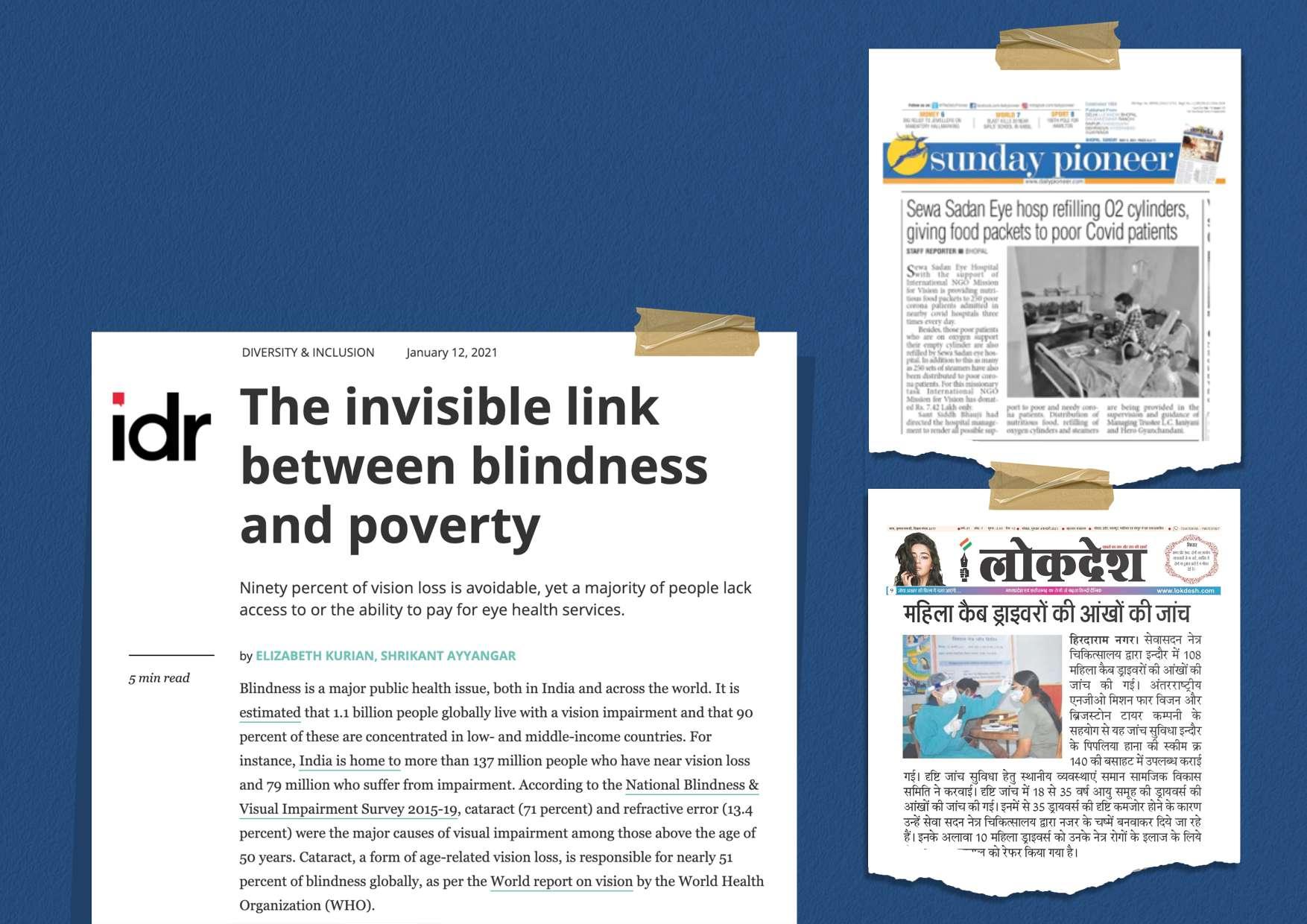
3 minute read
RESEARCH
RESEARCH
Mission for Vision has been actively involved in primary research to identify the gaps in delivery of primary eye-care services and determine workable solutions for appropriate eye health care. With the help of MFV's technological innovation PRISM - Patient Related Impact Studying Mechanism, we have been able to gather evidence on various dimensions of eye health systems. This data is particularly useful to understand the effectiveness of our programmes and mould the eye health interventions based on the needs of the community.
Advertisement

Women Healthcare Providers and Uptake of Primary Eye Care Services
We conducted this study with the aim of understanding whether a dedicated vision centre (VC), managed exclusively by women staff, would improve access to primary eye health services amongst women and girls in tribal and remote rural communities in Maharashtra. The uptake of primary eye care services and other regular parameters at an all-women VC were assessed and compared with the standard VC model.
VISION CENTRES (operated by female staff)
Out of the total 9,730 patients screened at the two VCs, 57.2% (5,563) were women and girls.
The refractions done and cataract cases identified were 15.7% (1,527) and 6% (582) respectively, of which over 60% were women.
VISION CENTRES (operated by male staff)
Out of the total 20,542 patients screened at the two VCs, 61% (12,531) were men.
The refractions done and cataract cases identified were 8.3% (1,706) and 2.2% (462) of which about 61% were men.
On the whole, the uptake of screening services and identification of refractive errors and cataract cases were significantly higher amongst women clients at the VC that were manned and operated by female staff as compared to the standard VC, where the uptake of screening services was significantly highest for the male subjects.

Eye Care Needs of Commercial Taxi Drivers
We conducted this research to assess the prevalence of refractive errors (RE) and its association with road traffic accidents (RTA) and the subsequent long-term spectacle compliance and suggest appropriate strategies. The study was conducted at five major taxi hubs in Shillong city and 382 commercial taxi drivers were interviewed and gross eye examinations conducted.
28.8% (95% CI 24.3% – 33.6%) Prevalence of any refractive error in the worst eye
21.7% (95% CI 17.7% – 26.2%) Presbyopia with or without distance vision
Drivers with RE were nearly two times (OR: 2.6; 95% CI: 1.4–5.1) more likely to be involved in road traffic accidents compared to those without any RE.
40.9% Long-term spectacle compliance was observed
Our Research Work

http://tiny.cc/mfvresearch1

https://bit.ly/2ZCSS5m

http://tiny.cc/mfvresearch2









